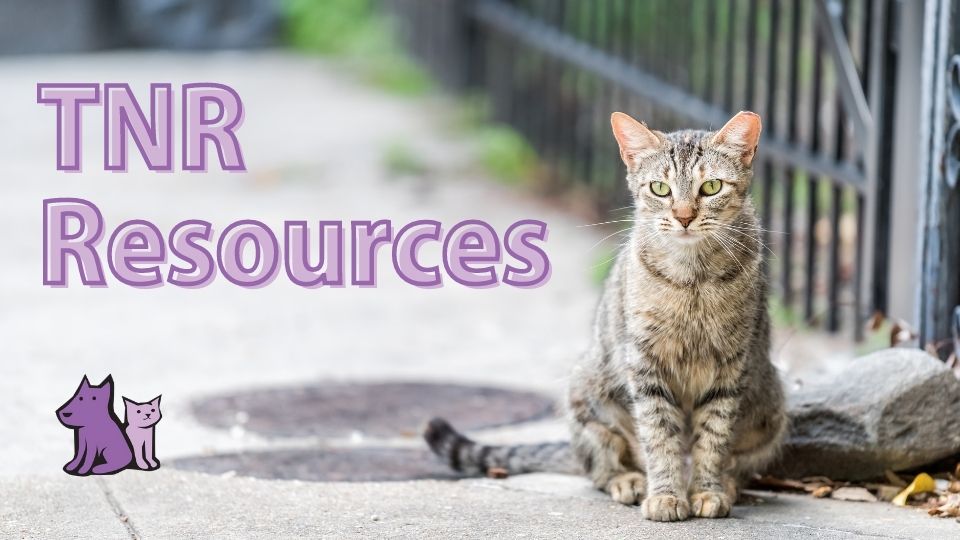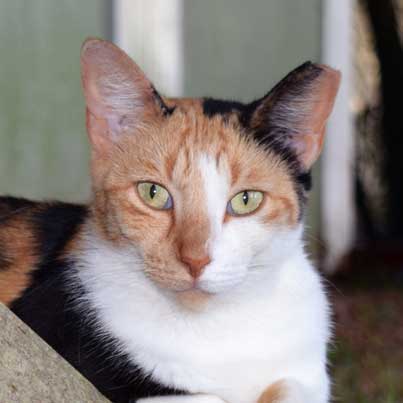Stray Cats, Community Cats and TNR in IL

Have you found a stray cat in your area and don’t know what to do with them? Read the information below to find more information about what you should do if you find a cat or kitten outside and how TNR (Trap, Neuter, Return) works.
I’ve found an adult cat outside in the Chicago area, what do I do?
When you find a cat outside, before taking any steps you want to evaluate if the cat is a community cat, feral cat, or a stray from a home. And as always, do not approach an outside cat without taking proper precautions to protect from bites, scratches, or other injury to you or the cat.
- If the cat is extremely fearful, hides, hisses, or is aggressive when you move into its space, the cat is likely unsocialized and TNR should be practiced to keep cat population under control and healthy. Unsocialized (sometimes known as “feral”) cats fear humans and can not be placed in human homes for adoption. Read more about common misconceptions about feral cats.
- If you is not aggressive when you are near it, the cat is likely a community cat and TNR should be practiced to keep the colony population healthy. Community cats have been exposed to humans but still might not be able to placed for adoption. Some animal rescues have barn or farm cat programs, which might also be an option for community cats.
- If the cat is friendly, comes up to you and asks for pets, rubs up against you, walks with their tail in the air, or comes out when you feed them, the cat is likely a stray and has been socialized with people. Stray cats should be taken to a vet or animal control to be scanned for a microchip. If they aren’t chipped, they can be turned over to a rescue organization for adoption (see A.R.F.’s owner surrender/pet relinquishment process).
Read more about feral, stray, and free-roaming cats from the National Feline Research Council.
I’ve found a kitten outside in the Chicago area, what do I do?
There are two considerations when you find a very young kitten:
- Is the kitten’s mother still around? DON’T KITNAP THE KITTENS! More often than not “motherless” kittens actually have a mother nearby and they should not be removed. Monitor the area from a distance over several hours (at least through the following morning) to see if the mother returns. If the kittens seem dirty, with flat bellies, dehydrated, or have been crying for several hours, intervene sooner.
- How old is the kitten? Kittens younger than 4 weeks need to be bottle fed kitten formula (do NOT feed them milk or water) and kept warm. If you are sure the kitten doesn’t have a mother, contact an animal welfare organization to get them to safety (see A.R.F.’s owner surrender/pet relinquishment process). Time is of the essence because very young kittens need to be fed up to every 2 hours. If the kitten is older than 4 weeks, they require fewer interventions but should still be turned over to an animal welfare organization for care and adoption ASAP.
Read more about finding kittens outside and what to do, or how to figure out how old is that kitten you found. The video below from The Kitten Lady is a wonderful resource.
What is TNR?
TNR stands for Trap, Neuter, Return (or Trap, Neuter, Release and sometimes Monitor; we do not suggest releasing cats without returning them to where they came from). This is a method to humanely manage free-roaming domestic cat populations. Outside, free-roaming cats that live in an area but don’t have owners are called community cats and the best way of caring for them is to leave them where they are in their cat colony. Colony caretakers practice TNR to keep the cat population size at a manageable level and colony members healthy through spay/neuter surgeries and vaccinations.
What does the TNR process include?
- Someone knowledgeable in TNR procedure will place a humane trap in the area they know community cats spend time.
- Once caught, the cat will be brought to a feral-friendly vet to be spayed/neutered, ear-tipped for identification, and vaccinated if possible.
- In some cases, kittens and friendly adults will be retained for adoption, but feral cats cannot be socialized so they will be released back to their colony.
- Cats not held for adoption will be returned back to their territory if it’s deemed a safe place for cats. Otherwise, the cats will be released into a safer outdoor environment.
For more information on the TNR process, check out Alley Cat Allies TNR step-by-step guide.
I see a cat outside, but part of their ear is cut off. What does that mean?

Surgically removing the end of a cat’s ear is called ear-tipping. It is used to indicate a cat that has been TNR’d – they have spayed or neutered and returned back to their colony or neighborhood. The tip is an easy way to see if a cat has been fixed without having to get up close for an “examination.” That ear tip is a good thing! That means they can’t contribute any more to outdoor cat overpopulation and are most likely being cared for in some way.
Occasionally you’ll see a cat available for adoption that has an ear tip – that just means that they were mistaken for a feral or community cat at one point and fixed, but then later determined to be adoptable.
TNR Resources in DuPage County, IL
The below organizations can help with TNR or if you find a homeless cat or kitten:
- Feral Fixers is a rescue dedicated to finding homes for socialized community cats and kittens. They also have a TNR Resource page for Chicagoland and additional IL counties, as well as a working cat program.
- Spay IL in Lisle has a $40 spay/neuter option for community cats (click Community Cats). They also have a “mama cat” program where they will spay the mama and kittens for free, and turn socialized kittens over to organizations like A.R.F to be adopted.
- If you find a cat or kitten outside, please follow A.R.F.’s cat relinquishment process. We will accept the cat into our foster program depending on space or availability. If you find a very young kitten do not remove from the nest until you confirm the mother is no longer around. See instructions above.
TNR Resource Links
- Feral Fixers: Trap Neuter Release Resources in IL
- Kitten Lady: How to Trap a Feral Cat for TNR
- Spay IL: TNR Step-by-Step Guide
- Alley Cat Allies: What to Do If You Find Kittens Outdoors
- Best Friends: Community Cat Resources
